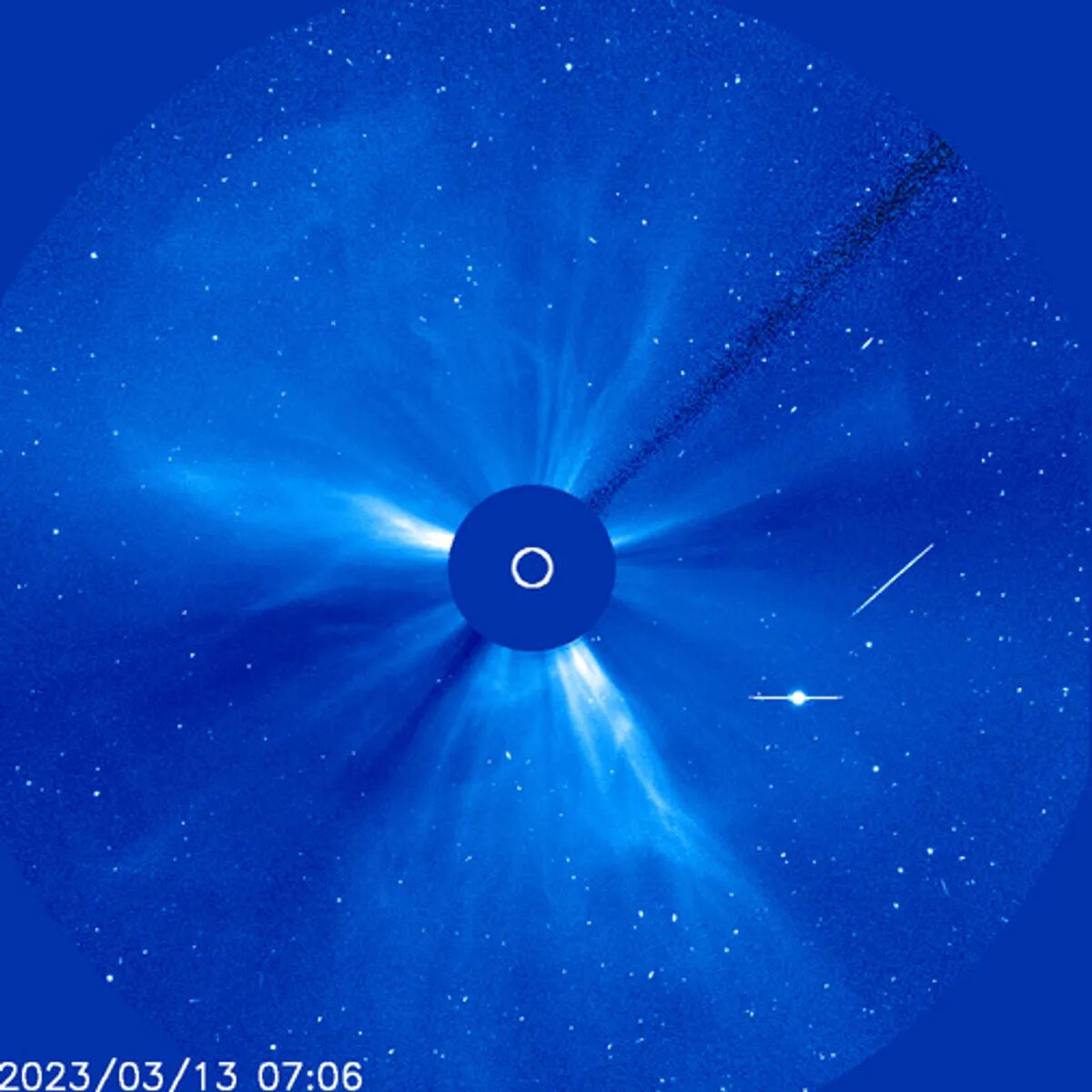
Comment: That it was 'almost directly opposite' is interesting in itself.
Despite coming from the far side of the Sun, it appears the event has caused a minor radiation storm on Earth. A smaller, and much slower, CME on Saturday that was predicted to graze the Earth may have also contributed. CMEs can affect each other, with one clearing a path for the charged particles from another. Spaceweather.com predicts shortwave radio failures for planes flying over the poles.
In 1989, a pair of CMEs and an X-15-class solar flare combined to fill the Earth's magnetosphere with charged particles, causing auroras as far south as Florida and tripping Quebec's power grid, and causing a nine-hour blackout across the province. On the scale of natural disasters that may seem small, but the solar activity that triggered it was minor compared to what we know is possible.
A much larger storm known as the Carrington Event in 1859 fried telegraph systems across North America. If it occurred today the consequences would be staggering, crashing electricity grids, dragging satellites from orbit and interfering with water supplies and the Internet. One model estimates the costs would be $2.6 trillion just in North America, but this could be slashed dramatically if preparatory action is taken.
Comment: As a sign of the shift occurring on our planet, and elsewhere in our solar system, less than 2 weeks earlier, a Powerful Solar storm had unusually strong impact on Earth, delaying a SpaceX rocket launch, and stalling oil rigs in Canada; a wellsite geologist commented that this was the first time he had ever experienced such an incident in the 30 years he has been in the profession.
With that in mind, it seems that even moderate solar activity is having a much more profound impact on our planet than usual.
Further, there is evidence showing that the Carrington event was not unique and that we may just have been 'lucky' up until this point.
How yesterday's CME compares to the Carrington Event is not yet clear. To some extent it will never be, since in the 19th century we lacked the capacity to measure the power of such storms precisely. Nevertheless, there is little doubt a storm like the one we just witnessed could do plenty of damage to an unprepared Earth.
The Sun is approaching a maximum in its 11-year cycle. Despite many predictions that this cycle would be a mild one, the opposite seems to be the case.
Comment: Relatively, this does appear to be the case, however the solar cycle has been recently revealed to also have a 17-year cycle. In addition, other respectable researchers are forecasting that we have instead entered a grand solar minimum, with all that entails.
Already we are reaching levels of activity, measured by the number of sunspots and the strength of CMEs and solar flares, similar to the peaks of the last two cycles, and we could still be years away from the summit.
That being the case, the chance of a powerful CME pointing our way in the near future is considerably higher than usual. Long-term preparations for such an event can include upgrading infrastructure, but in most cases it is probably too late for that for this cycle.
If an outburst is coming our way there are more short-term actions that can be taken, such as shutting down electricity grids to prevent transformers overloading. However, the faster-moving a CME is, the less time governments and infrastructure companies have to make the decision whether to bear some temporary pain in order to reduce the risk of a major meltdown. Many may fear pushback from the same people who resisted pandemic interventions as restrictions on their rights.
Comment: That's because those 'interventions' were not backed up by any science, and they were many times more deadly than the disease.
There are wildly varying estimates of the risk of a Carrington-style CME hitting Earth, from around 1 percent in a decade to 12 percent. Palaeontologists have sought markers of such events using radioisotope records in tree rings and ice cores, hoping to work out how often they strike Earth, but the question is unsettled.



Add the significantly reduced geomagnetic field, which results in less protection.
Thus the prediction of some renegade scientists about a possible event before 2025 that puts us back to stone age level.